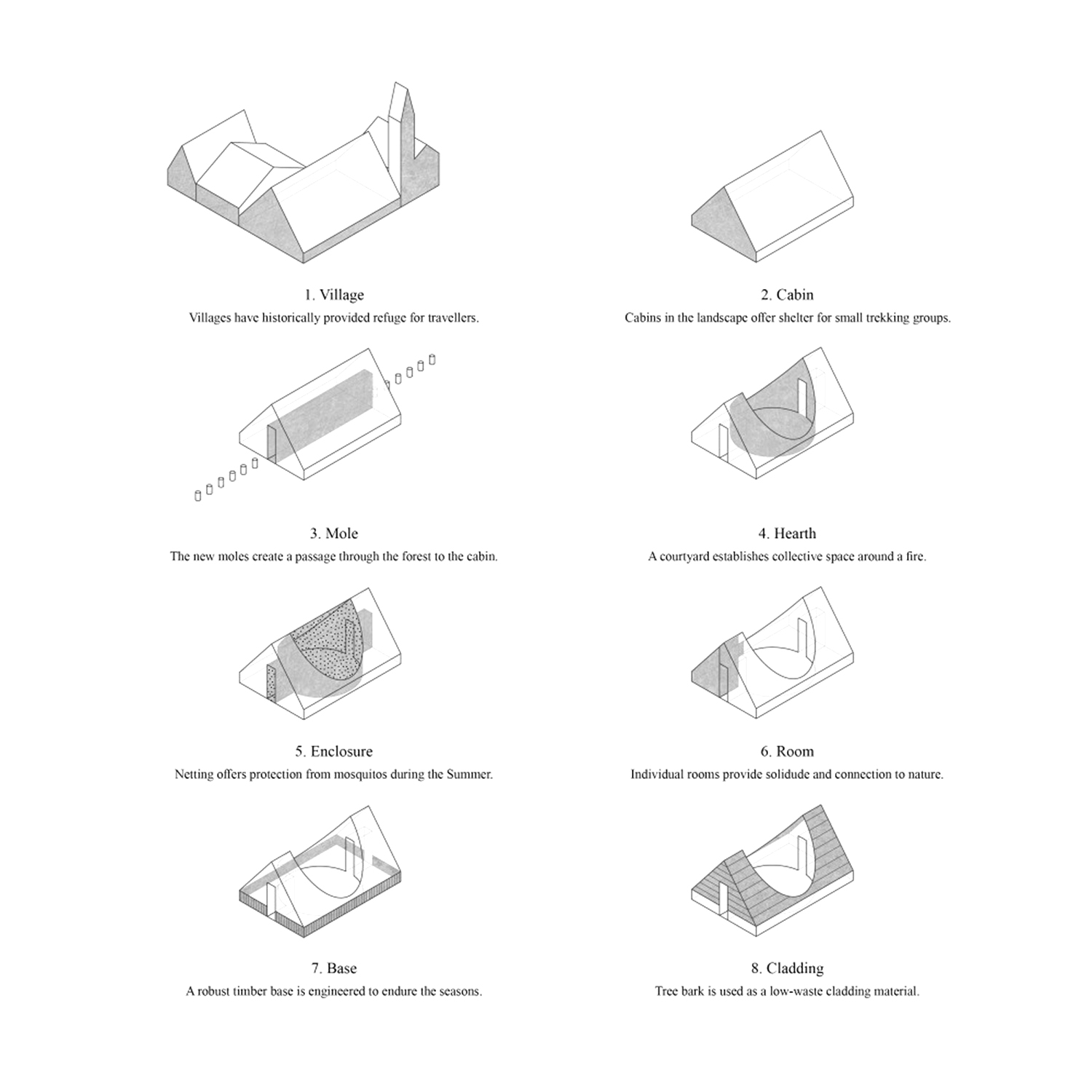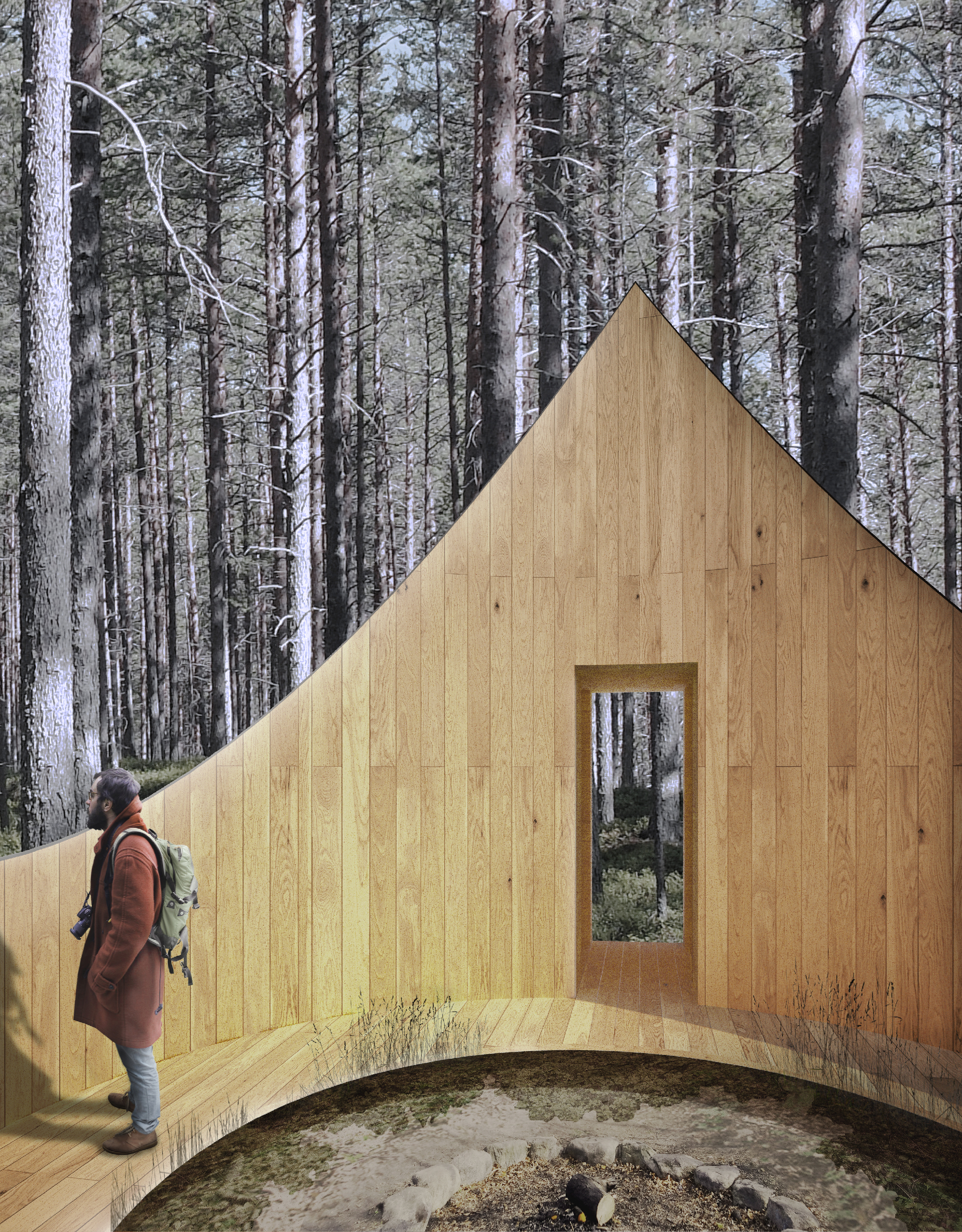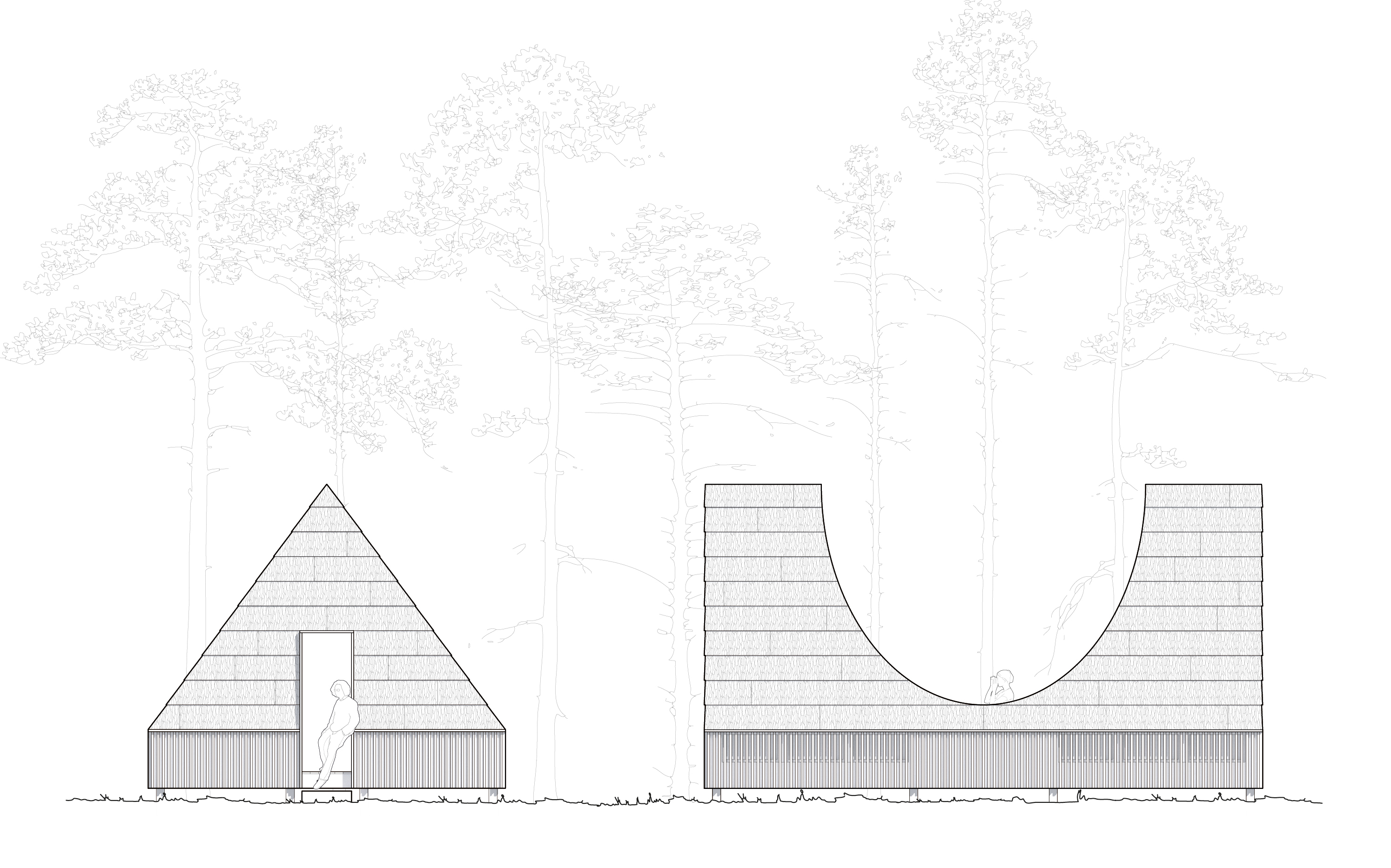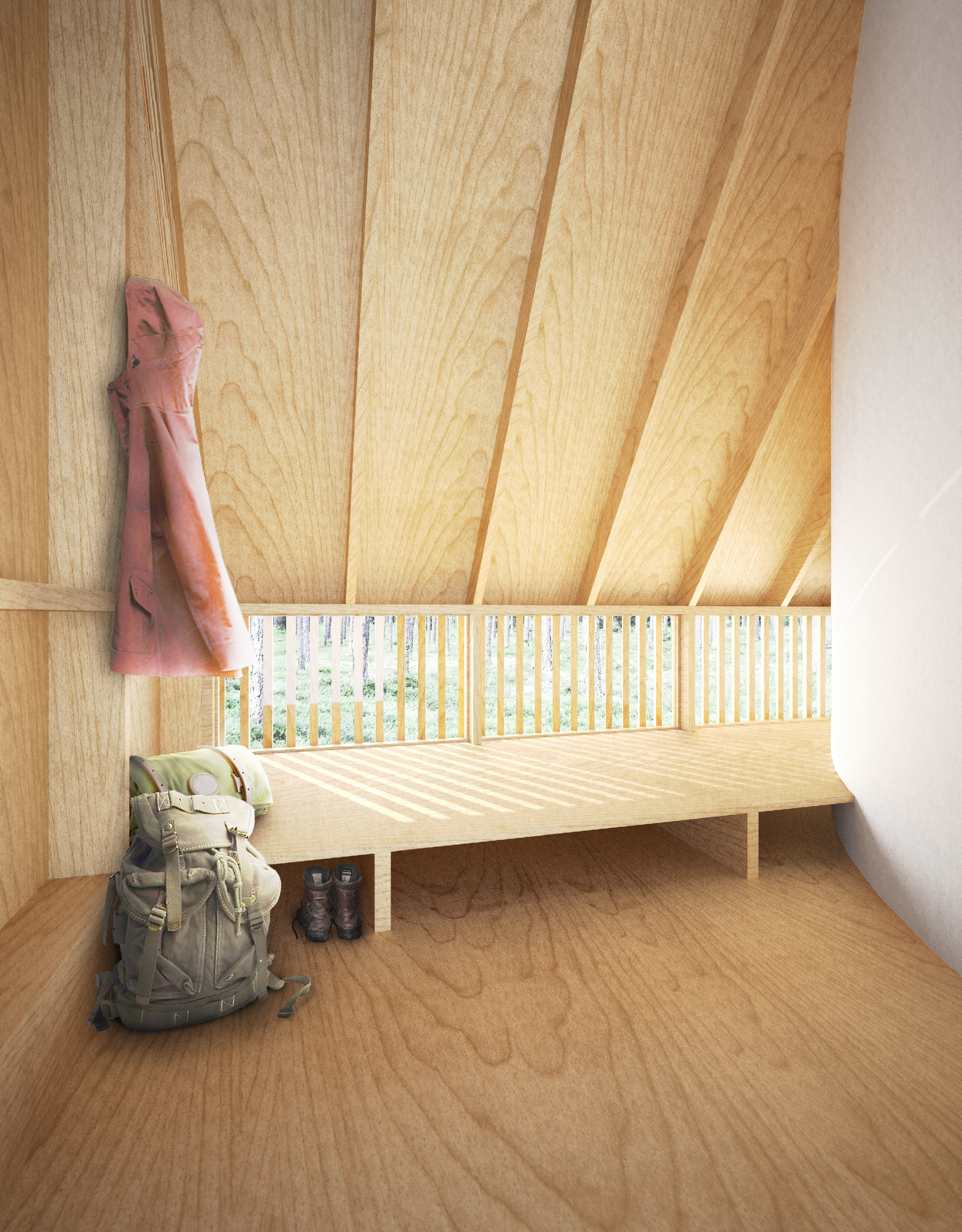








Link Cabin
Amber Roads Trekking Cabin Competition - 1st Prize
In collaboration with Santiago Carlos Peña Fiorda and Andreea Cutieru (White Arkitekter)
Building in nature is a paradox. How can we - residents, tourists, architects, trekkers - experience the Latvian coastline without having a negative impact on the local environment? Around the world, natural landmarks are being slowly loved to death by visitors, but the link concept offers an alternative, where architecture facilitates immersive access to the landscape and promotes environmental conservation.
Inspired by the traditional coastal moles that connect the beaches to inland environmental attractions and access points, a new system forest moles will establish narrow passages through the wood, leading trekkers to cabins embedded in the natural environment. There will be no extensive excavation or plumbing or infrastructural investment to disrupt the landscape or wildlife. The low impact approach means that investment for the new network of cabins can stretch along the entire Latvian coastline, helping to attract more visitors in a sustainable way.
While the profile of the cabin takes cues from the region’s traditional architecture, with steep roof pitches and low eaves, the building morphology is in fact a very literal response to both the collective and the individual nature of wilderness trekking. For the collective, an outdoor room in the middle of the shelter functions as the archetypal hearth, where trekkers can gather together around the fire to share stories, food, and experiences. That void’s geometry frames views to the landscape and supports a mosquito net during the summer months. Around the communal space, four individual sleeping rooms offer privacy and solitude.
Amber Roads Trekking Cabin Competition - 1st Prize
In collaboration with Santiago Carlos Peña Fiorda and Andreea Cutieru (White Arkitekter)
Building in nature is a paradox. How can we - residents, tourists, architects, trekkers - experience the Latvian coastline without having a negative impact on the local environment? Around the world, natural landmarks are being slowly loved to death by visitors, but the link concept offers an alternative, where architecture facilitates immersive access to the landscape and promotes environmental conservation.
Inspired by the traditional coastal moles that connect the beaches to inland environmental attractions and access points, a new system forest moles will establish narrow passages through the wood, leading trekkers to cabins embedded in the natural environment. There will be no extensive excavation or plumbing or infrastructural investment to disrupt the landscape or wildlife. The low impact approach means that investment for the new network of cabins can stretch along the entire Latvian coastline, helping to attract more visitors in a sustainable way.
While the profile of the cabin takes cues from the region’s traditional architecture, with steep roof pitches and low eaves, the building morphology is in fact a very literal response to both the collective and the individual nature of wilderness trekking. For the collective, an outdoor room in the middle of the shelter functions as the archetypal hearth, where trekkers can gather together around the fire to share stories, food, and experiences. That void’s geometry frames views to the landscape and supports a mosquito net during the summer months. Around the communal space, four individual sleeping rooms offer privacy and solitude.

